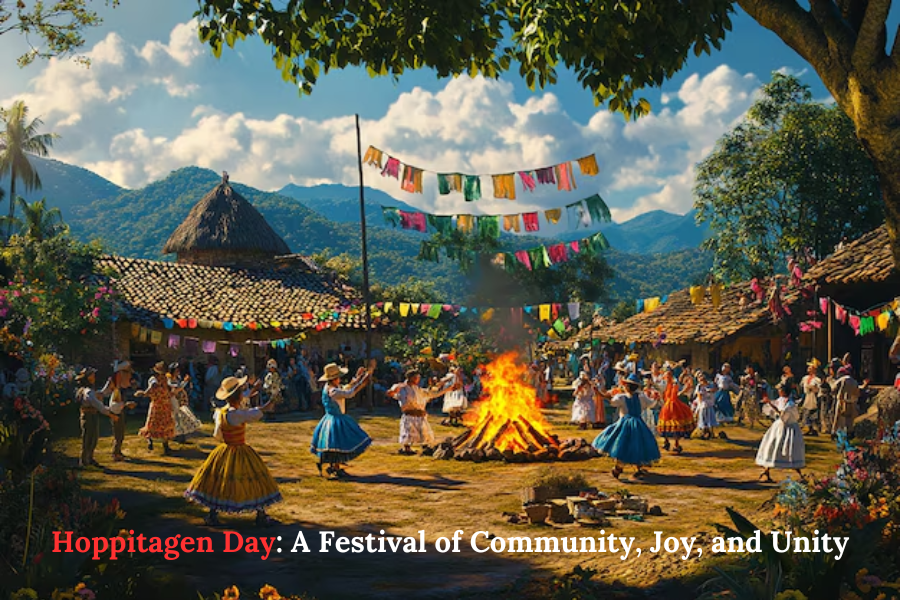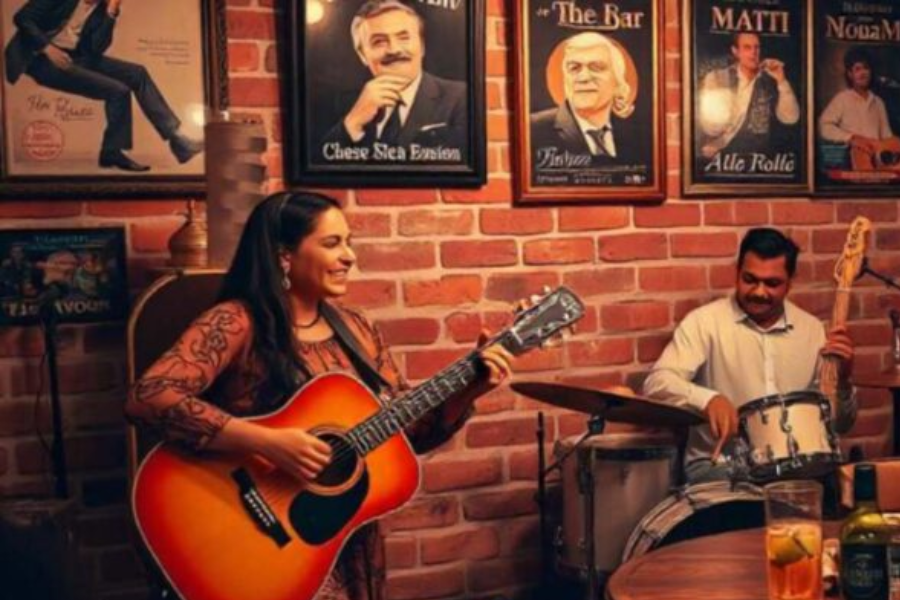Introduction to Hoppitagen Day
Have you encountered the celebration of Hoppitagen Day? If not, you’re about to learn about an exciting and joyful event that brings together communities worldwide, fostering unity, happiness, and shared experiences. Hoppitagen Day is more than just a festival; it is an expression of cultural diversity, historical traditions, and the meaningful connections that bind people together. This article will take you through the story of Hoppitagen Day, its customs, global significance, and the reasons why this celebration remains cherished in modern times.
The Historical Roots of Hoppitagen Day
Hoppitagen Day has deep historical roots, originally connected to ancient seasonal celebrations that marked the arrival of spring. This time of rebirth was a natural occasion for honoring nature’s renewal and growth. Over the centuries, communities have gathered to celebrate the return of warmer weather, the blooming of plants, and the revitalization of the earth. What started as a simple agricultural festival gradually evolved, incorporating different cultural influences into the celebration we now recognize as Hoppitagen Day.
Early Celebrations and Their Evolution
The origins of Hoppitagen Day can be found in rural areas where seasonal festivals were central to local life. These early events brought together people from villages and small towns, where they celebrated nature’s cycles by sharing goods, feasting, and participating in fun, simple activities. As time went on, these humble gatherings transformed into more formalized celebrations, incorporating music, dancing, and ceremonies, which eventually became key features of Hoppitagen Day.
The Global Cultural Influence of Hoppitagen Day
While Hoppitagen Day began with specific regional traditions, its influence has spread across the world. The central themes of the festival—renewal, unity, and joy—resonate with people from different cultural backgrounds, making it a widely celebrated event. What started as a local custom has evolved into a global celebration, showing how cultural practices can transcend borders while maintaining their original meaning.
The Diverse Global Observances of Hoppitagen Day
The way Hoppitagen Day is celebrated varies across the globe, with each region adding its unique flair to the occasion. While participants in some areas might wear elaborate costumes and decorate the streets with vibrant displays, others may celebrate through more intimate, community-based activities. These celebrations reflect the diversity of the world’s cultures and the shared values that unite them.
The Traditions That Shape Hoppitagen Day
A defining feature of Hoppitagen Day is the rich variety of customs that have developed over the years. Each generation has contributed new practices, making the celebration richer and more meaningful. Today, the traditions of Hoppitagen Day emphasize community, sharing, and cultural expression. A particularly beloved custom is the potluck meal, where everyone contributes a dish, reinforcing the spirit of togetherness and cooperation.
You May Also Like: Exploring the Importance of 47.111.30.135: A Complete Guide
Culinary Traditions: Food and Drink on Hoppitagen Day
A celebration wouldn’t be complete without food, and Hoppitagen Day is known for its abundance of delicious dishes, showcasing the season’s freshest ingredients. Each region has its own specialties, but hearty stews, roasted meats, fresh vegetables, and freshly baked bread are common. Sweet treats such as pastries and cakes are also key components of the celebration.
Drinks play an important role too, with many communities serving traditional beverages like fruit juices, herbal teas, and locally brewed alcoholic drinks. Sharing these drinks in a communal setting is a vital part of the celebration, symbolizing unity and prosperity.
A Variety of Enjoyable Events and Activities
In addition to food and drink, Hoppitagen Day is marked by a wide range of fun and engaging activities that bring people together. In bustling cities, parades filled with floats, marching bands, and folk dancers entertain the crowds. Music and colorful performances fill the air, creating an exciting atmosphere.
In contrast, smaller towns may host more personal events such as local fairs, art exhibits, and community sports. These events encourage participation and bring people together with activities like tug-of-war, races, and cooking competitions. Many places also feature outdoor concerts, theatrical shows, and dance parties to ensure that the fun is available for all ages.
Hoppitagen Day: A Family-Friendly Celebration
For families, Hoppitagen Day offers a multitude of activities suitable for all ages. Family picnics are a popular tradition, where people gather in parks or open spaces to share meals and enjoy nature. These picnics often include games, arts and crafts, and outdoor adventures. Many regions also host nature walks and guided tours that allow families to explore local wildlife and appreciate the season’s changes.
Creative activities like art workshops, craft stations, and cooking classes also provide opportunities for families to bond while creating something special together. These hands-on experiences enhance the sense of community and offer lasting memories for everyone involved.
The Global Scope of Hoppitagen Day
Hoppitagen Day is celebrated in various ways around the world, with each country adding its own unique touch to the occasion. In Spain, for example, the festivities might include lively street celebrations with flamenco dancers, musicians, and colorful costumes. This diversity in how Hoppitagen Day is observed underscores its global appeal—people from different cultural backgrounds can celebrate common values while honoring their distinct traditions.
Regional Variations in Hoppitagen Day Customs
Each place has its own unique customs that contribute to the rich tapestry of Hoppitagen Day. In some areas, the focus is on music and dance, with large-scale performances showcasing local folk songs and dances. In other regions, the emphasis may be on creating beautiful decorations and art that reflect the changing seasons. These artistic endeavors often involve the entire community, with people of all ages contributing their creativity to the celebrations.
The Role of Community in Celebrating Hoppitagen Day
At its core, Hoppitagen Day is about the strength of the community. This day isn’t just a festival—it’s a reminder of the importance of unity, shared experiences, and the deep connections that bind people together. Hoppitagen Day encourages individuals to not only celebrate the changing of the seasons but also to nurture the human bonds that bring local communities closer together.
In many ways, the festival serves as a powerful catalyst for social engagement, where people come together for food, entertainment, and art, celebrating life, shared values, and the unity that makes Hoppitagen Day such a beloved occasion.
The Role of Community Collaboration in Organizing Hoppitagen Day
At the heart of Hoppitagen Day lies the power of community teamwork. Unlike many other festivals that are driven by commercial interests or professional planners, Hoppitagen Day is mainly organized by local communities. From small grassroots groups to neighborhood organizations, these local entities are essential in bringing the celebration to life. Planning for the event typically starts months in advance, as community members gather to organize activities, secure resources, and coordinate volunteers, ensuring a seamless experience for all participants.
The Vital Role of Volunteers in Hoppitagen Day Celebrations
Volunteers are the unsung heroes who make Hoppitagen Day truly special. These dedicated individuals take on numerous roles throughout the festival, from managing parades and fairs to decorating venues and overseeing crowd control. Volunteering during Hoppitagen Day is not just about helping out; it’s about embodying a deep commitment to fostering civic pride and preserving local culture.
By giving their time and effort, volunteers instill a sense of shared responsibility and pride, allowing everyone to feel part of something larger than themselves. Their hard work is often invisible, but it’s crucial in ensuring that the festival runs smoothly and remains a joyful experience for everyone, strengthening the spirit of the community.
Uniting Different Generations Through Hoppitagen Day
One of the most remarkable aspects of Hoppitagen Day is its power to bring together people from all generations. It serves as a celebration for everyone, regardless of age, and provides a platform for meaningful interactions between different age groups.
The Role of Elders in Preserving Traditions
During Hoppitagen Day, older members of the community often assume the role of mentors, sharing time-honored customs and stories with younger participants. This exchange occurs in many forms, from passing down family recipes to teaching traditional dances and even sharing local myths and tales. Seniors often take the lead in explaining the significance of certain practices, ensuring the younger generation understands the history and cultural relevance behind the festivities.
This intergenerational exchange strengthens the cultural identity of the community and preserves traditions that might otherwise be lost. As younger participants engage in these activities, they inherit the knowledge, ensuring that Hoppitagen Day’s legacy continues for generations to come. This sense of continuity helps solidify a shared community identity and provides a lasting sense of connection to the past.
Uniting Communities Through Shared Experiences
A key element of Hoppitagen Day is its ability to bring people together through collective activities.
Communal Dining and Potluck Traditions
One of the most cherished customs of Hoppitagen Day is the tradition of communal meals. These potluck-style gatherings, where each participant contributes a dish, create an atmosphere where people share not just food but also their personal histories, recipes, and stories. The diversity of dishes becomes a beautiful representation of the community’s varied cultures, backgrounds, and traditions.
Sharing food during Hoppitagen Day symbolizes generosity and mutual support, fostering deeper connections among friends and neighbors. People sit together around the table, enjoying the collective contributions and celebrating the abundance of the season.
Collaborative Art Projects
For many communities, Hoppitagen Day serves as a chance to engage in group art projects that capture the essence of unity. Whether it’s through painting a mural, creating a public art installation, or crafting decorative pieces with local materials, these projects allow individuals of all ages to collaborate and showcase their creativity. The artworks created become symbols of the community’s values, beliefs, and shared experiences.
These artistic works often remain as enduring landmarks in the community, continuously reminding people of the importance of working together toward a common goal. They stand as visible symbols of unity and cooperation, which are central to the spirit of Hoppitagen Day.
Enhancing Social Bonds
Hoppitagen Day provides an ideal opportunity for deepening social connections within communities. In smaller towns and rural areas, where personal bonds are highly valued, the festival allows people to reconnect with long-time friends, welcome new neighbors, and strengthen their relationships.
Bridging Social Divides
What sets Hoppitagen Day apart is its ability to unite individuals from diverse social, cultural, and economic backgrounds. The celebration is intentionally designed to be inclusive, ensuring that everyone, regardless of age, income, or status, can participate. People from different neighborhoods come together to take part in local festivities, creating new friendships and reinforcing existing ones.
These interactions foster social cohesion and help reduce feelings of isolation. As a result, communities become more connected and supportive, nurturing long-lasting relationships that extend well beyond the day’s events.
Embracing Inclusivity in Community Activities
In the modern world, it’s crucial that festivals like Hoppitagen Day promote inclusivity. By celebrating diversity, the event remains meaningful and relevant to people of all backgrounds. Communities that prioritize inclusivity cultivate an environment where every participant feels valued and embraced.
Key Insights on Hoppitagen Day and Its Impact on Communities
- Active Participation Drives Success: The success of Hoppitagen Day hinges on the active involvement of local communities. Whether it’s a small-town celebration or a grand festival, the contribution of volunteers and local organizations is vital to ensuring the event runs smoothly. This community-based approach fosters a sense of shared pride and ownership.
- Volunteers: The Pillars of Hoppitagen Day: Volunteers play an indispensable role in Hoppitagen Day, taking on essential tasks like organizing parades, managing family activities, setting up decorations, and ensuring that everything runs efficiently. Their dedication is crucial to the success of the celebration.
- Passing Down Knowledge Between Generations: One of the most valuable aspects of Hoppitagen Day is the exchange of wisdom between older and younger generations. Seniors often serve as mentors, sharing their knowledge of customs and traditions, preserving the community’s heritage, and ensuring that cultural practices endure.
- Activities for Everyone: A hallmark of Hoppitagen Day is its inclusiveness, offering activities that appeal to people of all ages and backgrounds, ensuring that everyone can take part in the celebrations.
Final Thoughts
Hoppitagen Day is far more than just a celebration; it embodies the values of unity, cultural preservation, and human connection. At its heart, the festival emphasizes shared experiences, the importance of maintaining cultural traditions, and the strengthening of bonds across generations and social divides.
The event’s remarkable ability to unite people of all walks of life enhances the social fabric of communities. Through activities like volunteering, communal meals, collaborative art, and intergenerational exchanges, Hoppitagen Day continues to build lasting relationships and encourage social unity.
In an increasingly interconnected world, Hoppitagen Day serves as a powerful reminder of the strength found in community and the beauty of human connection. It invites us to embrace our cultural differences while emphasizing the universal need for togetherness and solidarity. Whether celebrated locally or globally, Hoppitagen Day continues to inspire people to gather, appreciate life, and create meaningful connections with others.
Frequently Asked Questions
Q: What is the primary theme of Hoppitagen Day?
A: Hoppitagen Day is all about celebrating community, togetherness, and the transformation of the seasons. It’s a day where people of all ages and backgrounds gather to honor cultural traditions, enjoy shared meals, and form meaningful connections with others.
Q: How can my community participate in Hoppitagen Day festivities?
A: Communities can take part by hosting various activities like potluck dinners, parades, local fairs, and collaborative art projects. Schools, volunteer groups, and community organizations can work together to organize these events, ensuring that everyone has a chance to get involved.
Q: What types of activities are typically seen on Hoppitagen Day?
A: Some popular activities during Hoppitagen Day include folk dances, cooking workshops, outdoor picnics, sports events, art sessions, and storytelling. While these activities may differ depending on the region, they all highlight cultural exchange and communal engagement.
Q: How can young people contribute to the celebration?
A: Young people are encouraged to actively take part in organizing events, helping with volunteer tasks, and leading youth-oriented activities. Their involvement ensures that Hoppitagen Day stays fresh, engaging, and meaningful for future generations.
Q: Are there any traditional foods served on Hoppitagen Day?
A: Food is an essential part of Hoppitagen Day, with community potlucks often featuring regional dishes. Participants bring their own special recipes, often using seasonal ingredients to celebrate the agricultural roots of the community and the changing seasons.
Stay in touch to get more news & updates on Get Break News











